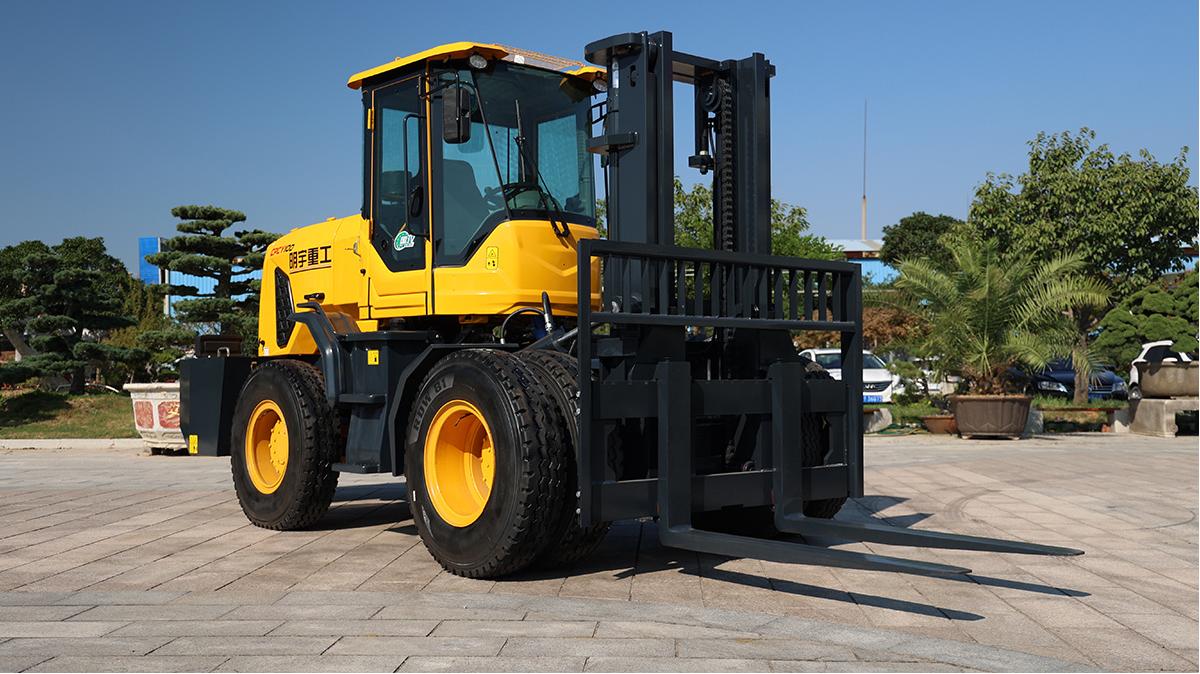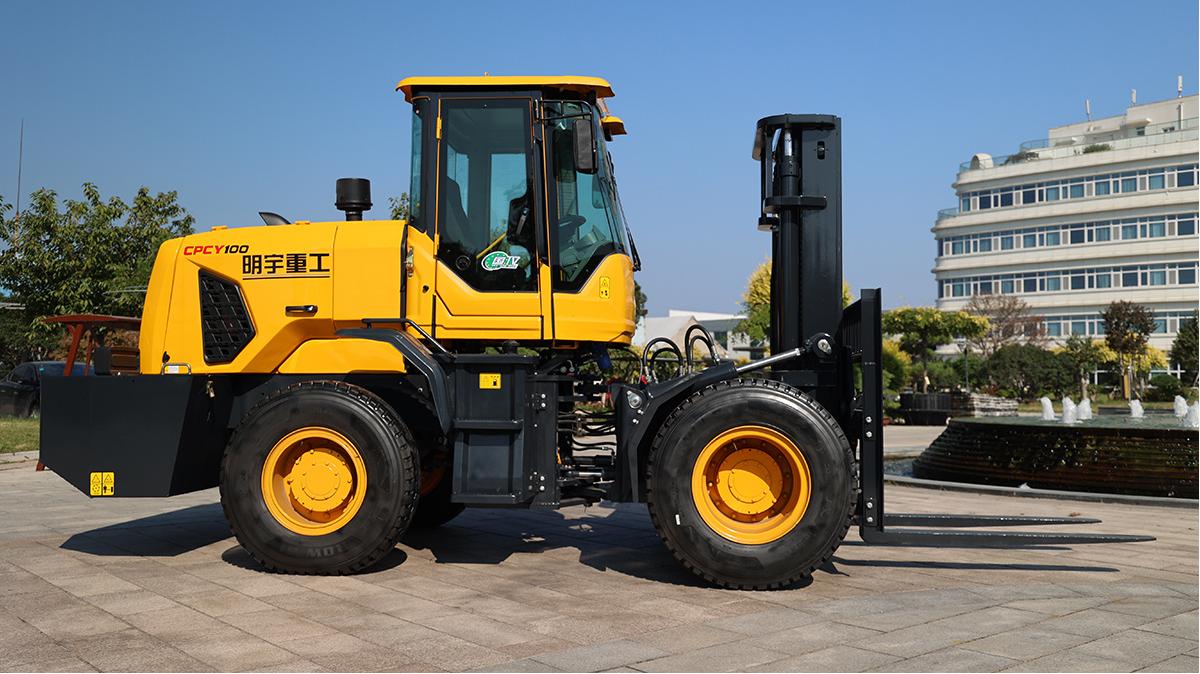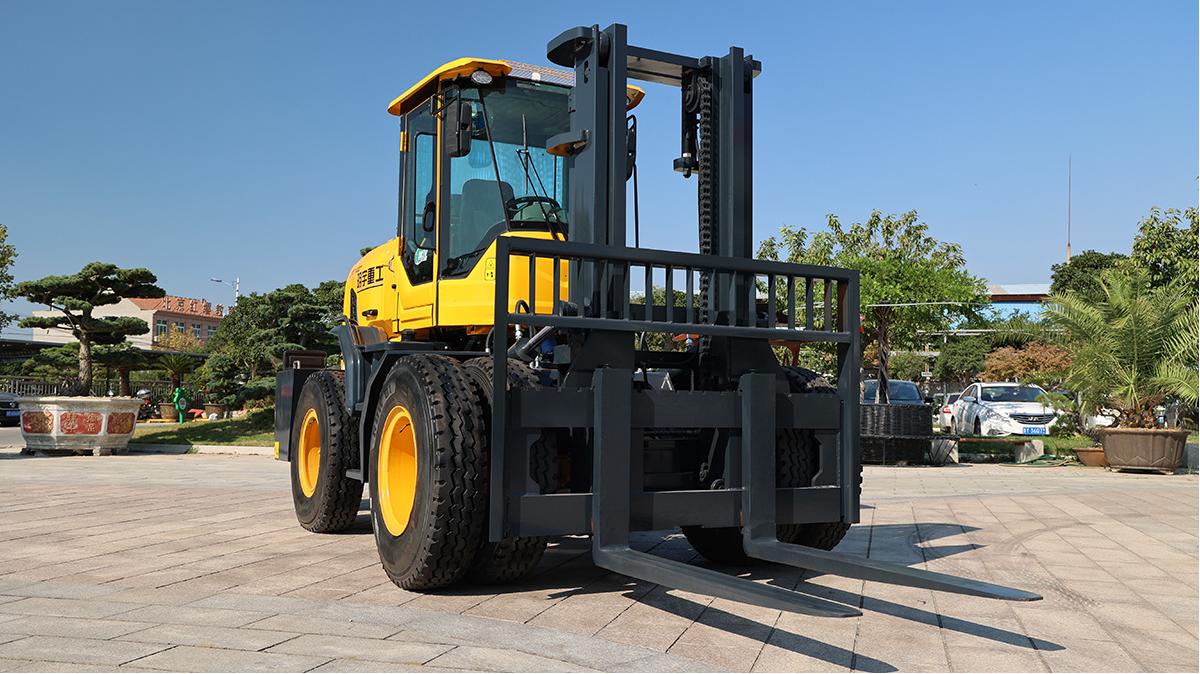What Is the Lifting Capacity of an Off-Road Forklift?
1. Introduction
Off-road forklifts are specialized machines designed to operate in rugged, uneven, and challenging environments such as construction sites, farms, lumber yards, and outdoor warehouses. Unlike standard warehouse forklifts, off-road forklifts must handle rough terrain while maintaining stability and safety when lifting heavy loads.
One of the most crucial specifications for any forklift is its lifting capacity—the maximum weight it can safely lift. For off-road forklifts, understanding this capacity is vital because operating beyond limits in uneven terrain can lead to accidents, equipment damage, and costly delays.
This article explores what lifting capacity means for off-road forklifts, the factors affecting it, typical capacities, safety considerations, and maintenance practices.
2. What Is an Off-Road Forklift?
An off-road forklift, also known as a rough terrain forklift, is built to work where conventional forklifts cannot. Key features include:
Large pneumatic tires or specialized treads for uneven or soft ground
High ground clearance
Robust suspension systems
Often equipped with four-wheel drive
These forklifts are used in industries like construction, agriculture, forestry, mining, and outdoor logistics. Variants include telehandlers and rough terrain forklifts, each designed for specific lifting and terrain challenges.
3. Understanding Lifting Capacity
Lifting capacity is the maximum load weight a forklift can safely lift under specified conditions, usually stated in pounds or kilograms. It is determined based on:
A standard load center (distance from the fork face to the center of gravity of the load)
The height to which the load is lifted
The machine’s counterweight and design
For off-road forklifts, the rated capacity is often lower than similarly sized warehouse forklifts due to terrain variability.
4. Factors Affecting Lifting Capacity of Off-Road Forklifts
Several factors influence an off-road forklift’s lifting capacity:
Terrain Conditions: Uneven, soft, or muddy surfaces reduce stability and capacity.
Tire Type and Size: Larger pneumatic tires provide better traction but affect load balance.
Mast Height and Tilt: Higher lifts and mast tilt angles reduce safe load weight.
Load Center: Loads positioned farther from the forklift reduce lifting capacity.
Attachments: Buckets, clamps, and extensions add weight and alter the center of gravity.
Machine Design: Counterweight size and chassis strength directly impact capacity.
5. Typical Lifting Capacities of Off-Road Forklifts
Off-road forklifts come in various sizes and capacities:
Small Models: Capable of lifting 2,500 to 5,000 pounds (1,100 to 2,300 kg)
Medium Models: Lift capacities around 5,000 to 10,000 pounds (2,300 to 4,500 kg)
Heavy-Duty Models: Can lift 10,000 to 25,000+ pounds (4,500 to 11,300+ kg)
For comparison, standard warehouse forklifts usually lift between 3,000 to 10,000 pounds, but operate on flat surfaces.
6. How to Determine Your Off-Road Forklift’s Lifting Capacity
Always consult the forklift’s data plate or manufacturer’s manual to determine the rated capacity. Consider:
The load center distance used for rating (commonly 24 inches or 600 mm)
Adjustments needed for attachments or non-standard lifts
Terrain conditions and how they affect stability
Manufacturers often provide load charts illustrating how capacity varies with lift height and load center.
7. Safety Guidelines for Operating Off-Road Forklifts at Capacity
Safety is paramount when lifting heavy loads off-road:
Conduct pre-operation inspections focusing on tires, mast, hydraulics, and brakes.
Always position loads to maintain center of gravity close to the forklift.
Avoid lifting loads too high on uneven or sloped terrain.
Use spotters and clear communication in difficult environments.
Ensure operators receive specialized training on off-road conditions.
8. Consequences of Overloading an Off-Road Forklift
Exceeding the rated lifting capacity can cause:
Tipping or rolling of the forklift, endangering the operator and others.
Structural damage to the mast, forks, or chassis.
Hydraulic system failure.
Legal liabilities and work stoppages.
Costly repairs and downtime.
9. Maintenance and Load Testing for Off-Road Forklifts
Regular maintenance ensures lifting capacity is maintained:
Inspect and replace tires to preserve traction and stability.
Regularly test and maintain hydraulic systems and brakes.
Perform load testing periodically to verify lifting performance.
Maintain certification as required by local safety regulations.
10. Conclusion
The lifting capacity of an off-road forklift is a critical specification influenced by terrain, equipment design, and operating conditions. Knowing and respecting this capacity ensures safe operation, prevents accidents, and extends equipment lifespan.
Operators and managers should always:
Consult the data plate and load charts
Adjust lifting practices based on terrain and attachments
Maintain regular inspections and training
By following these guidelines, off-road forklift users can maximize efficiency and safety in demanding environments.
Post time:Jun.25.2025



